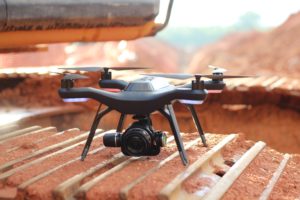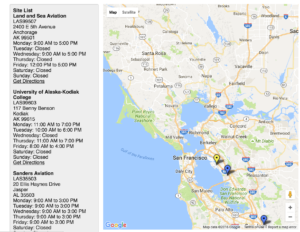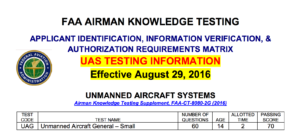I am as excited as anyone in the commercial drone field for the passage of Part 107 and the relaxing of the currently extremely restrictive rules on commercial UAS usage, which will dramatically increase adoption of tools like 3DR Site Scan.
However, just registering to sit for the exam requires a guide itself. Startlingly, this is even more painful than the process implemented by NCEES for the Engineer in Training and Professional Engineer exams. The FAA doesn’t appear to have evolved in the last 50 years. All registration is done by phone, all study guides are published in non-semantic pdf documents, and all instructions are scattered about a patchwork of different public and private websites and documents. I hope this post can serve as an easy-to-digest, authoritative guide for registering for the exam.
- Find a test center near you. You can either look through the FAA’s awful official test center list here or use a 21st century web app like this one.

- Despite the conflicting information out there, you cannot register for the test online. You must call or email to schedule the exam.
- Don’t call the test center directly. They are not in charge of scheduling. You must call the mothership, which in this case is not the FAA, but PSI, a private company with which the FAA has contracted to administer the test who has published very dense website explaining some of the procedures. For some reason, PSI gives two numbers, neither of which were answered on my first attempt, 1-800-211-2754 and 1-800-733-9267.
- Once you get through to the operator, I spoke with Deborah who was amazing, you will walk through availability and testing centers. The Oakland test center’s schedule was wide open, so I don’t think this is terribly popular yet. The test center takes a credit card over the phone for the $150 fee.
- Prepare everything you need to take the exam. You must bring a photo ID with a current address. If the address on your ID is not current, you must bring a utility bill or other fairly official piece of documentation.
- Study! The exam ain’t easy and includes quite a bit of general aviation knowledge with which typical commercial drone operators won’t be familiar.
- A summary of the Part 107 rule can be found here and the complete text here
- Details as to how to operate under the rule are here
- Peruse the study guide and knowledge test instructions, and, for extra credit, read Airmen Certification Standards and Pilot’s Handbook of Aeronautical Knowledge, as recommended by the FAA
- Take the sample test. The full exam contains 60 question and requires a score of 70% to pass.
And that’s it! I will report back when I take the exam on Monday.


